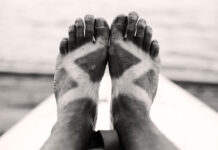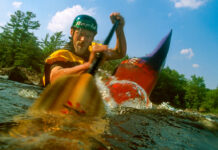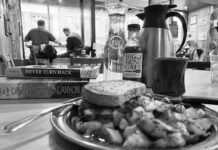In the academic world there exists a model outlining the five phases of the recreation and tourism experience. Researchers have come to understand how our overall satisfaction of a paddling trip depends on the degree to which our expectations are met or exceeded in each of the different phases. But hang on; I’m getting ahead of myself.
The first phase of paddle travel
Is The Planning And Anticipation Phase. It may begin with this Paddling Trip Guide issue of Paddling Magazine, in fact that’s sort of my goal. This stage builds the hype. We set goals and create expectations often months and sometimes years in advance.
Phases two and four
These are the travel to and travel from phases. From a tourism economic perspective, the travel stages are big business. For us, done right, these two phases can be as important as the adventure itself.
Phase three
This is the easy one—the actual trip. So long as the adventure meets our physical, social and intellectual needs we pretty much are going to have a good time. We usually do.
Phase five
This is the reason we buy souvenirs and hold potluck suppers.As time passes after the trip we tend to heighten the good memories and forget about the bugs, wind and rain. This recollection phase is why you are already planning your next adventure.
Who am I to argue with experts with doctorates, but I believe they are missing a crucial sixth phase.
Paddling trips offer an intense and emotional life-changing experience but often end abruptly, dropping us back into Monday morning traffic surrounded by people who, for the most part, frankly don’t get it.
When I worked as a commercial guide, we planned last night campfires to help our guests begin the transition back to real life. We handed out certificates of accomplishment and we shared trip stories. We talked about the feelings they would experience tomorrow.
This sixth phase is typically a happy-sad period
Happy because dreams came true. Horizons were broadened. Challenges crushed. Confidence boosted. Friendships strengthened. But sad because it is suddenly over.
Managed poorly, this post-trip phase of reintegration back to normal life can spiral into post-trip depression. Post-trip stress disorder is triggered by intense emotional or life-changing events, like wilderness trips by canoe, kayak and standup paddleboards.
Symptoms are similar to other acute forms of depression, including: fatigue, irritability, mood swings, inability to concentrate, increased desire to be alone and loss of interest in things you usually enjoy.
While only recently identified in psychology journals, post-trip blues has probably existed since the beginning of paddle travel.
Voyageurs felt it returning from travels with the North West and Hudson Bay Company. Inuit peoples suffered returning to their villages from the narwhal hunt. I watch my children mope around for days after arriving home from summer canoe camp.
While we return from paddling adventures feeling different and new on the inside, the world to which we’re returning is both unchanged, and yet smaller and less relatable. Early research on post-trip depression focused on international travellers returning after year-long walkabouts. Researchers later discovered what we already know, it doesn’t have to be an extended trip or experiencing a different culture to trigger post-trip blues.
I’ve experienced the post-trip blues after just a weekend canoe trip with my kids. We’d share so much together in just three days—returning to toys, tantrums and telephones would bring about a good cry, wishing life could always be as good as it just was on the river.
Clinical psychologist Linda Blaire recommends scheduling your return home from a big trip on a Friday.
“It takes a good three days to wind down, so likewise it will take you a bit of time to re-immerse yourself in real life,” Blair writes in The Key to Calm: Your Path to Mindfulness and Beyond.
Great advice for extended trips, but what do we do when the trip itself is from Friday to Sunday?
There’s a reason why we linger at take-outs, putting off the long drives to Sunday dinners. Sometimes a beer on the tailgate and 20 more minutes of camaraderie is all the happy-sad buffer we need. Sometimes it is the long, lonely drive home with the right playlist. For an extended trip, my happy-sad recovery place is my gear room. The hanging, folding, scrubbing and stuffing of gear is my therapeutic buffer. I’m also packing away my memories. This phase is both closure and preparation for life’s next adventure.
Most of us returning from paddling trips have temporary difficulty adjusting and coping upon our return. With time and good self-care, we usually settle in. If the symptoms get worse, last for months, or interfere with your day-to-day functioning, I suggest another alternative. Turn to pages 62, 120, 162 or 182, and self-medicate by beginning the cycle all over again. Repeat as often as required.
Scott MacGregor is the publisher and founder of Paddling Magazine.








